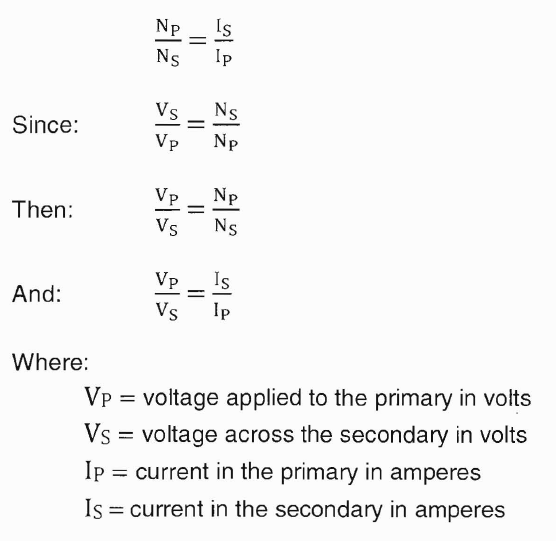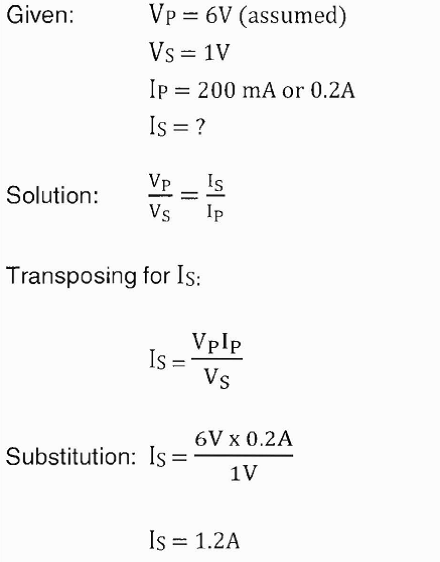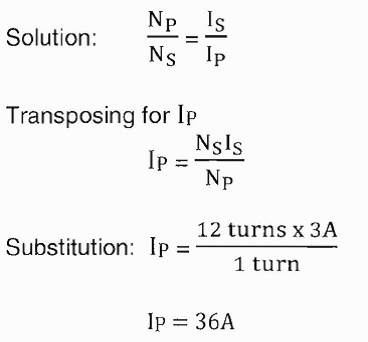Transformers » Turns and current ratios
Turns and Current Ratios
The number of flux lines developed in a core is proportional to the magnetizing force (in ampere-turns) of the primary and secondary windings.
The ampere-turn (I x N) is a measure of magneto motive force; it is defined as the magneto motive force developed by one ampere of current flowing in a coil of one turn. The flux which exists in the core of a transformer surrounds both the primary and secondary windings. Since the flux is the same for both windings, the ampere-turns in both the primary and secondary windings must be the same.
Therefore:

By dividing both sides of the equation by IPNs, you obtain:

Notice that the equations show the current ratio to be the inverse of the turns ratio and the voltage ratio. This means, a transformer having less turns in the secondary than in the primary would step down the voltage, but would step up the current.
Example: A transformer has a 6:1 voltage ratio.
Find the current in the secondary if the current in the primary is 200 milli amperes.

The above example points out that although the voltage across the secondary is one sixth the voltage across the primary, the current in the secondary is six times the current in the primary.
The above equations can be looked at from another point of view. Using American notation, the expression Tp:Ts is called the transformer turns ratio and may be expressed as a single factor. Remember, the turns ratio indicates the amount by which the transformer increases or decreases the voltage applied to the primary. For example, if the secondary of a transformer has two times as many turns as the primary, the voltage induced into the secondary will be two times the voltage across the primary. If the secondary has one-half as many turns as the primary, the voltage across the secondary will be one-half the voltage across the primary. However, the turns ratio and the current ratio of a transformer have an inverse relationship. Thus, a 1:2 step-up transformer will have one-half the current in the secondary as in the primary. A 2:1 stepdown transformer will have twice the current in the secondary as in the primary.
Example: A transformer with a turns ratio of 1:12 has 3 amperes of current in the secondary. What is the value of current in the primary?


